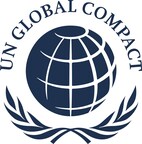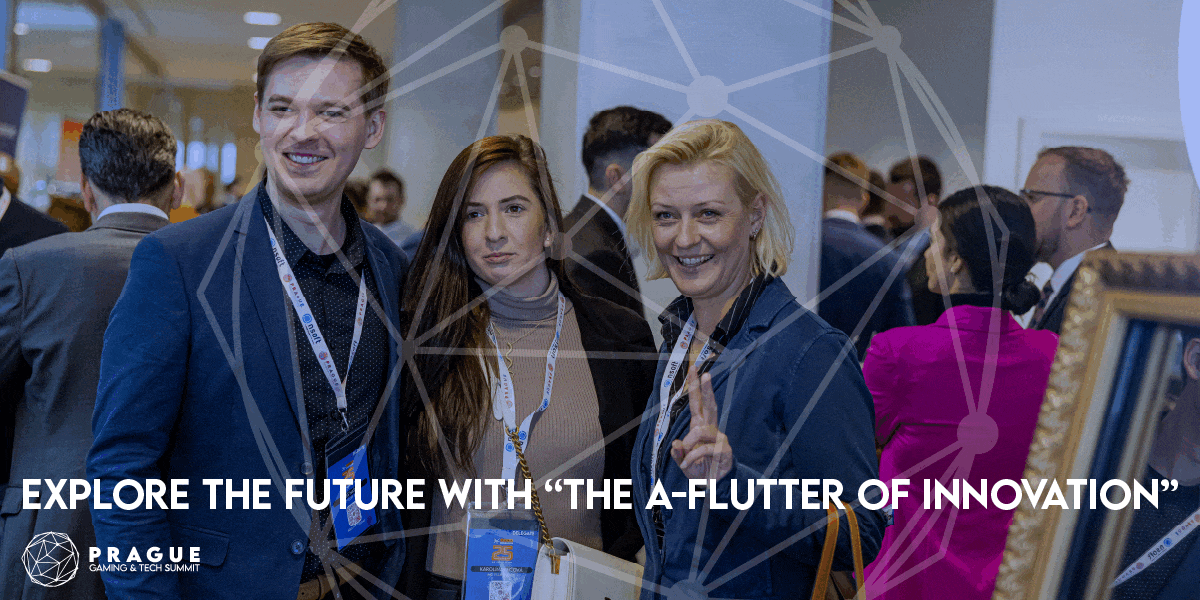Fintech PR
Western Union: Nearly 2 in 5 migrants living in Canada state that without being able to send money back home their family would be in poverty
DENVER, July 11, 2023 /PRNewswire/ — New research released today by Western Union has revealed that nearly 2 in 5 (35%) migrants living in Canada believe their friends or family would be in poverty if it wasn’t for them sending regular payments back home.
The report – The Value of Remittance – looks to shed a light on the real-world impact of remittance payments, finding that 40% of migrants believe that without being able to send money, their family or friends would not be able to afford medical treatment and 32% state that members of their family would not be able to attend school or further education. Forty-six percent went on to say that without their support, their family or friends back home would not be able to afford good quality food.
The study, which surveyed migrants living in Canada, demonstrates the positive affect that remittance payments have on families around the world. The report found that 61% of migrants believe that their families’ quality of life has improved vastly due to the money that they send and 60% believe that their family and friends have more opportunities in life as a result of their remittance payments.
How is remittance being used by families of migrants living in Canada?
On average migrants were found to send 9% of their annual income as remittance. With the primary reasons being to support their families with the cost of groceries (61% of respondents), healthcare (54%) and accommodation (33%). Ninety percent of migrants were found to have sent money to family back home in the past 12 months and 43% of migrants state that being able to send money to family back home was a key factor in their decision to move to Canada.
The most common uses of remittance amongst families of migrants:
- Groceries (61%)
- Healthcare (54%)
- Accommodation (33%)
- Paying off family debt (26%)
- Education (25%)
- Transport costs (15%)
- Paying towards family childcare (12%)
- Supporting a family members business (11%)
- Paying towards family wedding costs (11%)
The pressure of providing back home
The study found that amongst rising inflation, many migrants are struggling with the pressure of providing for their families and friends back home. Over half (57%) of migrant’s state that due to the rising cost of living, they have had to work extra hours or have started another job to continue sending remittance payments and 47% say that they have had to reduce the amount of remittance that they send due to rising living costs. Over a third (34%) reported that they were concerned about the possibility of losing their job in the next 12 months and the impact this will have on their families back home.
Top 10 countries migrants living in Canada are sending money to:
- India
- Philippines
- China
- France
- Pakistan
- Vietnam
- Germany
- Italy
- Lebanon
- United States
(Source: KNOMAD/World Bank Bilateral Remittance Matrix)
This pressure is having a profound strain on the mental wellbeing of migrants living in Canada. Over two-thirds (37%) state that the responsibility of having to support their family or friends can sometimes be too much to bear and over half (53%) of migrants say that they regularly make sacrifices in their own life to ensure that they are able to continue sending money to their friends or family. Thirty-six percent also reported that they often feel lonely, suggesting many migrants are prioritising work over building their own personal relationships.
Despite this, nearly three-quarters (74%) of migrants of state that the fact that they are able to send money to their friends or family gives their life a sense of purpose and 46% of migrants say that without having moved to Canada they may not have been able to support their friends or family financially at all.
Bob Rupczynski, Chief Marketing Officer at Western Union says: “This research highlights the crucial role that remittance payments play in supporting families and communities around the world.
The money that migrants send provides an essential lifeline for their families and friends back home and at Western Union we recognise the immense impact that these payments have, providing access to basic needs, healthcare, education, and opportunities for a better life.
We are proud to help facilitate these important connections and to help power people’s pursuits all over the world. It’s our guiding mission to make finance accessible to all, so that we can all achieve financial prosperity, wherever we are.”
For more information and to read the full report please visit: https://www.westernunion.com/blog/en/ca/value-of-remittance-canada/
Note to editors:
If you choose to run this story, please provide a link back to the Western Union page: https://www.westernunion.com/blog/en/ca/value-of-remittance-canada/
Methodology
Research was conducted by 3Gem on behalf of Western Union in March 2023. The research surveyed 1,500 migrants who regularly send remittance across the following countries:
|
Country |
N= |
|
UK |
350 |
|
Italy |
300 |
|
Spain |
300 |
|
Canada |
200 |
|
Australia |
200 |
|
New Zealand |
150 |
|
Total |
1500 |
The top 10 countries for outward remittances were sourced from: KNOMAD/World Bank Bilateral Remittance Matrix 2021, December 2022: https://www.knomad.org/data/remittances
About Western Union
The Western Union Company (NYSE: WU) is a global leader in cross-border, cross-currency money movement and payments. Western Union’s platform provides seamless cross-border flows and its leading global financial network bridges more than 200 countries and territories and approximately 130 currencies. We connect consumers, businesses, financial institutions, and governments through one of the world’s widest reaching networks, accessing billions of bank accounts, millions of digital wallets and cards, and a substantial global network of retail locations. Western Union connects the world to bring boundless possibilities within reach. For more information, visit www.westernunion.com .
View original content:https://www.prnewswire.co.uk/news-releases/western-union-nearly-2-in-5-migrants-living-in-canada-state-that-without-being-able-to-send-money-back-home-their-family-would-be-in-poverty-301873536.html
Fintech PR
FNZ Shareholder feud: Board’s oppressive tactics persist as FNZ extends equity deadline without addressing core concerns
LONDON, April 15, 2025 /PRNewswire/ — FNZ has extended the deadline for three “catch-up” equity offers to 14 May 2025, in what appears to be an effort to manage growing discontent among employee shareholders.
Impacted shareholders, however, say the extension fails to address the fundamental issues: significant dilution, lack of transparency, conflicts of interest on the Board, uncommercial terms, and financial barriers that effectively exclude them from participating.
The three offers relate to equity raises in May 2024, August 2024, and most recently 12 April 2025. Together, these capital raisings have diluted employee shareholders by over US$4.5 billion – including US$1.5 billion from the most recent raise of US$500 million.
Despite the magnitude of these transactions, affected shareholders were not notified of the dilutive impact until early 2025 – months after the first two raises had already occurred. Notices regarding the 2024 raises were only issued in February this year, giving shareholders just 30 days to respond. FNZ has since extended this deadline three times, culminating in the new May cut-off.
But former employees say the real issues run deeper.
“It’s not about having more time,” said one shareholder, who asked to remain anonymous.
“The documents are complex, and I’m being asked to contribute money to retain equity that I was originally granted for years of work. That’s never been the model before.”
Another added: “The only reason I’d even consider investing is to avoid being diluted further. But the amount is way beyond what I or any of my colleagues would be able to afford. They know that, so they are just giving themselves a 200% return at the expense of my equity.”
Adding to the unease of the bullying tactics used to muzzle this shareholder class, a social media account on X (formerly Twitter) that had been sharing updates of media coverage about the situation was recently suspended. A new version of the account has since been launched at x.com/nzclassaction.
FNZ was founded in New Zealand in 2003, and remains domiciled there. The board’s actions may violate The New Zealand Companies Act 1993, and the shareholders have said that they will reserve the right to take the dispute to the New Zealand High Court if an agreement cannot be reached.
View original content:https://www.prnewswire.co.uk/news-releases/fnz-shareholder-feud-boards-oppressive-tactics-persist-as-fnz-extends-equity-deadline-without-addressing-core-concerns-302429374.html

Fintech PR
Global Water Electrolysis Equipment Market Booms with 51.3% CAGR | PEM & Alkaline Electrolyzers in Focus – Valuates Reports
BANGALORE, India, April 15, 2025 /PRNewswire/ — Water Electrolysis Equipment Market is Segmented by Type (PEM Electrolyzer, Alkaline Electrolyzer), by Application (Power to Gas, Chemical Industry and Refining, Metallurgy and Steel Industry, Hydrogen Refueling Station, Power Industry, Electronics and Semiconductor).
The Global Water Electrolysis Equipment Market was valued at USD 885 Million in 2023 and is anticipated to reach USD 18840 Million by 2030, witnessing a CAGR of 51.3% during the forecast period 2024-2030.
Claim Your Free Report: https://reports.valuates.com/request/sample/QYRE-Auto-35R13170/Global_Water_Electrolysis_Equipment_Market
Major Factors Driving the Growth of Water Electrolysis Equipment Market:
The water electrolysis equipment market is witnessing robust growth driven by global energy transition efforts and the accelerating adoption of hydrogen as a clean energy carrier. The rising demand across industrial sectors, coupled with strong policy backing and falling system costs, is fueling market expansion. Both PEM and alkaline technologies are gaining ground, with newer entrants exploring solid oxide alternatives. Strategic collaborations, green hydrogen mega projects, and integration with renewables are propelling innovation and commercialization. As hydrogen becomes central to decarbonization, the market is poised for sustained, long-term development across diverse applications.
Unlock Insights: View Full Report Now! https://reports.valuates.com/market-reports/QYRE-Auto-35R13170/global-water-electrolysis-equipment
TRENDS INFLUENCING THE GROWTH OF THE WATER ELECTROLYSIS EQUIPMENT MARKET:
Proton Exchange Membrane (PEM) electrolyzers are significantly contributing to the expansion of the water electrolysis equipment market due to their high efficiency and compact design. These systems are particularly favorable for dynamic operations and intermittent power supply from renewable sources like solar and wind. Their ability to operate at high current densities and produce high-purity hydrogen with rapid startup and shutdown cycles makes them ideal for energy storage and industrial hydrogen demand. Additionally, PEM electrolyzers are witnessing growing deployment in transportation applications, particularly for fuel cell vehicles, thereby expanding the scope of green hydrogen production. As countries push toward decarbonization, PEM electrolyzers play a pivotal role in enabling clean hydrogen ecosystems.
Alkaline electrolyzers are propelling the growth of the water electrolysis equipment market owing to their technological maturity, cost-effectiveness, and large-scale hydrogen production capabilities. These systems are widely used in industries such as chemicals, fertilizers, and metallurgy where continuous hydrogen supply is essential. Their long operational lifespan and lower capital costs compared to PEM systems make them particularly attractive for industrial-scale hydrogen production. Furthermore, governments and industries are revisiting alkaline systems with modernization upgrades to enhance energy efficiency and integrate them with renewable sources. This renewed interest, combined with their historical reliability, is reinforcing alkaline electrolyzers as a cornerstone in scaling up green hydrogen infrastructure.
Power to Gas (P2G) technologies are driving demand for water electrolysis equipment as they enable the conversion of excess renewable electricity into storable hydrogen or synthetic methane. This approach supports grid stability by utilizing surplus electricity and bridging seasonal energy supply gaps. Water electrolysis acts as the fundamental enabler in P2G by splitting water into hydrogen, which can be injected into natural gas pipelines or used directly in industrial applications. As energy transition accelerates, the integration of electrolysis units into P2G systems provides utilities and grid operators with a scalable solution for energy balancing and decarbonization, thereby fueling market growth.
National hydrogen strategies and policy frameworks are catalyzing market adoption. Several countries have introduced subsidies, grants, and regulatory support to encourage investment in electrolysis technologies. These initiatives are not only reducing the financial risks associated with large-scale projects but also boosting industry confidence in long-term hydrogen infrastructure development.
Industrial decarbonization goals are prompting sectors like steel, cement, and chemicals to adopt hydrogen as a clean energy substitute. Water electrolysis provides an efficient, zero-emission method of producing hydrogen, aligning perfectly with corporate ESG targets and carbon neutrality pathways, thereby expanding demand for electrolysis systems.
The global scale-up of solar and wind power installations is creating an environment conducive to electrolysis. These renewable sources supply the required electricity for electrolysis, allowing hydrogen to be produced cleanly and sustainably. The synchronization of electrolyzers with renewable energy grids enhances energy utilization and supports the growth of the hydrogen economy.
Fuel cell vehicles and hydrogen refueling infrastructure are gaining momentum, particularly in public transport and logistics. Electrolysis systems offer a clean method for producing hydrogen fuel on-site, reducing dependence on fossil-based hydrogen and cutting emissions in the transportation sector. This surge in fuel demand propels the electrolyzer market forward.
The adoption of hybrid renewable-electrolyzer systems for energy-intensive industrial processes is becoming a key growth driver. These setups enhance energy efficiency and reduce overall emissions. The seamless integration of electrolyzers into existing industrial ecosystems provides scalability and operational flexibility, expanding their market footprint.
Advancements in manufacturing and economies of scale are driving down the costs of electrolysis units. Innovations in catalyst materials, membrane technology, and modular design are improving system efficiency and lifespan. These trends are making electrolyzers more accessible to a broader range of end users, from SMEs to utilities.
Claim Yours Now! https://reports.valuates.com/api/directpaytoken?rcode=QYRE-Auto-35R13170&lic=single-user
WATER ELECTROLYSIS EQUIPMENT MARKET SHARE:
Global key players of Water Electrolysis Equipment include Nel Hydrogen, Siemens, Plug Power, PERIC Hydrogen Technologies, Hydrogen Pro, etc. The top five players hold a share of about 46%.
China is the world’s largest market for Water Electrolysis Equipment and holds a share of about 37%, followed by Europe and North America, with shares about 31% and 21%, separately.
In terms of product type, Alkaline Electrolyzer is the largest segment, accounting for a share of about 55%.
In terms of application, Power to Gas is the largest field with a share of about 38 percent.
Key Companies:
- Cummins
- Siemens AG
- Teledyne Energy Systems
- EM Solution
- McPhy
- Nel Hydrogen
- TianJin Mainland
- ShaanXi HuaQin
- Beijing Zhongdian
- H2B2
- PERIC Hydrogen Technologies
- LONGi Green Energy Technology
- Sungrow Power Supply
- Hydrogen Pro
- Plug Power
- Cockerill Jingli Hydrogen
- Thyssenkrupp AG
- Sunfire
- SANY Hydrogen
- Shandong Saikesaisi Hydrogen Energy
- CIMC GH2 Technology
- Verde Hydrogen
- SPIC Hydrogen Technology
Purchase Regional Report: https://reports.valuates.com/request/regional/QYRE-Auto-35R13170/Global_Water_Electrolysis_Equipment_Market
SUBSCRIPTION
We have introduced a tailor-made subscription for our customers. Please leave a note in the Comment Section to know about our subscription plans.
DISCOVER MORE INSIGHTS: EXPLORE SIMILAR REPORTS!
– Water Electrolysis Hydrogen Equipment Market was valued at USD 1801 Million in the year 2024 and is projected to reach a revised size of USD 24170 Million by 2031, growing at a CAGR of 45.6% during the forecast period.
– PEM Water Electrolysis Equipment for Hydrogen Production Market
– Electrolyzed Water Generation Equipment Market
– Seawater Electrolysis System Market
– Alkaline Water Electrolysis System Market
– Water Electrolysis Proton Exchange Membrane Market
– Electrolyzer Market was estimated to be worth USD 308 Million and is forecast to reach approximately USD 999 Million by 2030 with a CAGR of 18.6% during the forecast period 2024-2030.
– Alkaline Water Electrolysis Hydrogen Production System Market
– Electrolytic Water Hydrogen Production Equipment Market
– Catalyst for Hydrogen Production from Water Electrolysis Market was valued at USD 183 Million in the year 2024 and is projected to reach a revised size of USD 1927 Million by 2031, growing at a CAGR of 40.5% during the forecast period.
DISCOVER OUR VISION: VISIT ABOUT US!
Valuates offers in-depth market insights into various industries. Our extensive report repository is constantly updated to meet your changing industry analysis needs.
Our team of market analysts can help you select the best report covering your industry. We understand your niche region-specific requirements and that’s why we offer customization of reports. With our customization in place, you can request for any particular information from a report that meets your market analysis needs.
To achieve a consistent view of the market, data is gathered from various primary and secondary sources, at each step, data triangulation methodologies are applied to reduce deviance and find a consistent view of the market. Each sample we share contains a detailed research methodology employed to generate the report. Please also reach our sales team to get the complete list of our data sources.
GET A FREE QUOTE
Valuates Reports
For U.S. Toll-Free Call 1-(315)-215-3225
WhatsApp: +91-9945648335
Website: https://reports.valuates.com
Blog: https://valuatestrends.blogspot.com/
Pinterest: https://in.pinterest.com/valuatesreports/
Twitter: https://twitter.com/valuatesreports
Facebook: https://www.facebook.com/valuatesreports/
YouTube: https://www.youtube.com/@valuatesreports6753
https://www.facebook.com/valuateskorean
https://www.facebook.com/valuatesspanish
https://www.facebook.com/valuatesjapanese
https://valuatesreportspanish.blogspot.com/
https://valuateskorean.blogspot.com/
https://valuatesgerman.blogspot.com/
https://valuatesreportjapanese.blogspot.com/
Logo: https://mma.prnewswire.com/media/1082232/Valuates_Reports_Logo.jpg
![]() View original content:https://www.prnewswire.co.uk/news-releases/global-water-electrolysis-equipment-market-booms-with-51-3-cagr–pem–alkaline-electrolyzers-in-focus—valuates-reports-302429348.html
View original content:https://www.prnewswire.co.uk/news-releases/global-water-electrolysis-equipment-market-booms-with-51-3-cagr–pem–alkaline-electrolyzers-in-focus—valuates-reports-302429348.html

Fintech PR
At HCI 2025 global minds convene to accelerate the future of human capability with over 13,000 participants from 120 countries

RIYADH, Saudi Arabia, April 15, 2025 /PRNewswire/ — The second edition of the Human Capability Initiative (HCI), has concluded, hosting over 300 influential leaders, policymakers, and global experts from 40 countries, including academia, private sector, international organizations, and non-profits.
HCI 2025 was held under the patronage of His Royal Highness Prince Mohammed bin Salman bin Abdulaziz Al Saud, Crown Prince and Chairman of the Human Capability Development Program Committee (HCDP), the organization which hosts HCI.
HCI 2025 welcomed over 13,000 participants from 120 countries to the King Abdulaziz International Conference Center in Riyadh under the theme #BeyondReadiness. The conference saw over 100 agreements announced across industry and various economic sectors, with a total investment of SAR8.5bn (US$2.2bn). Among the key agreements, the prestigious London Business School revealed plans to establish a new office in Riyadh.
This year’s event brought together a stellar lineup, with senior government officials such as the Deputy Prime Minister and Minister of Education of South Korea, joining leaders from the private and nonprofit sectors. Global organizations and top academic institutions were also represented, including the World Bank, International Labor Organization (ILO), World Economic Forum (WEF), United Nations Development Program (UNDP), and UNICEF, as well as Microsoft, Google for Education, Apple Academy, University of Chicago’s Harris School of Public Policy and London Business School. The conference served as a dynamic platform for fostering collaboration and innovation in addressing the challenges of a rapidly changing labor market.
Speaking at the conference, Dr. Majid bin Abdullah Al-Kassabi, Minister of Commerce, said: “Saudi Arabia today is moving…from ambition to action. Vision 2030 is no longer a roadmap, it’s no longer a blueprint. It’s transformation in motion, reflecting the ambitions of the Kingdom’s leadership and reaffirming Saudi Arabia’s commitment to building a prosperous future for its people and strengthening its leadership on both regional and global fronts.”
During his opening remarks on the second day of the conference, H.E. Eng. Ahmed bin Sulaiman AlRajhi, Saudi Minister of Human Resources & Social Development, said: “Throughout history, progress has been driven by those willing to adapt, to innovate, and to embrace change. Today we find ourselves at a time when human capital is not a subset of economy and fiscal policy, it is the defining variable of global prosperity.”
In his closing address, H.E. Yousef Al-Benyan, Minister of Education, said: “Throughout this conference, we engaged in powerful dialogues and shared innovative insights that underscore the extraordinary potential within every individual. HCI 2025 demonstrated that sustainable human capability development and meaningful impact require cross-sector partnerships, collective responsibility, and strategic alignment across governments, private sectors, academic institutions and civil society.”
HCI hosted a ministerial roundtable, bringing together international human capability development officials alongside leading international experts in education and technology, as well as representatives from local and international organizations. The discussion centered on the theme ‘AI Skills for All’, which delved into strategies to ensure equitable access to this transformative technology.
The conference also marked the launch of the ‘Future Skills Initiative’ by H.E. the Minister of Commerce and Chair of the Economic and Social Committee of the Saudi–UK Strategic Partnership Council. This initiative seeks to foster the exchange of expertise to cultivate future-ready skills across 13 high-potential sectors. The launch was attended by 40 government officials and 100 business leaders from Saudi Arabia and the United Kingdom.
This year’s agenda focused on pioneering innovative learning models to equip individuals with the skills and knowledge needed to thrive in an evolving labor market shaped by rapid technological advancements, particularly in artificial intelligence (AI).
At the conclusion of the conference, the Minister of Education and Chairman of the Executive Committee of the Human Capability Development Program, alongside Eng. Anas Al-Mudaifer, CEO, and Dr. Bedour Alrayes, Vice President of the Human Capability Development Program (HCDP), extended their gratitude to HCI partners across the public, private, and nonprofit sectors – both within the Kingdom and globally – for their contributions to the event’s success.
The conference also provided speakers and delegates the chance to engage in Saudi culture, with the venue offering musical performances, traditional craft workshops and the taste of world-famous Saudi coffee.
Notes to Editors
About Human Capability Initiative (HCI):
The Human Capability Initiative (HCI) is the first global cooperative platform designed to unify international efforts and enrich global dialogue on the challenges and opportunities for developing human capabilities. Organized by the Human Capability Development Program – a part of the Vision 2030 realization programs – in partnership with Ministry of Education, HCI unites government entities, the private sector, and nonprofit organizations to foster collaboration and drive innovation in the realm of human capabilities.
The conference took place on 13 – 14 April, 2025 at the King Abdulaziz International Conference Center in Riyadh under the theme ‘Beyond Readiness’.
For more information, contact media@humancapabilityinitiative.org or visit:
Program: https://humancapabilityinitiative.org/wp-content/uploads/2025/04/HCI-2025-Official-Program.pdf
Website: www.humancapabilityinitiative.org
X: https://x.com/HCI_KSA
Instagram: https://www.instagram.com/hci_ksa/?next=%2F
YouTube: https://www.youtube.com/@HCI_KSA/videos
About the Human Capability Development Program (HCDP):
HCDP is one of the Vision 2030 Realization Programs (VRP) that aims to position the Kingdom of Saudi Arabia as a global leader. HCDP will prepare citizens with the required skills, values and knowledge to compete globally.
https://www.vision2030.gov.sa/v2030/vrps/hcdp/
About Saudi Vision 2030:
Under the leadership of the Custodian of the Two Holy Mosques, Saudi Vision 2030 was launched by His Royal Highness Prince Mohammed bin Salman Al Saud, Crown Prince, and Prime Minister, with a roadmap to build Saudi Arabia’s prosperous and bright future through a vibrant society, a thriving economy, and an ambitious nation.
Photo: https://mma.prnewswire.com/media/2665461/HCI_Riyadh_2025.jpg
![]() View original content:https://www.prnewswire.co.uk/news-releases/at-hci-2025-global-minds-convene-to-accelerate-the-future-of-human-capability-with-over-13-000-participants-from-120-countries-302429205.html
View original content:https://www.prnewswire.co.uk/news-releases/at-hci-2025-global-minds-convene-to-accelerate-the-future-of-human-capability-with-over-13-000-participants-from-120-countries-302429205.html

-

 Fintech PR4 days ago
Fintech PR4 days agoAB Charity Foundation Launches to Pioneer a New Global Model for Public Good Driven by Institutional Trust and Technology
-

 Fintech6 days ago
Fintech6 days agoFintech Pulse: Your Daily Industry Brief – April 09, 2025: Hawk, Ryft, Alinea Invest, Honeycomb Credit, Workcap
-

 Fintech PR4 days ago
Fintech PR4 days agoAccount Payables and Receivables Application Market on a Steady Growth Path: Projected to Grow Through 2030 at CAGR 9.70%
-

 Fintech5 days ago
Fintech5 days agoFintech Pulse: Your Daily Industry Brief – April 10, 2025 Featured Companies: Solid, Transficc, Visa, Notre Dame Fintech Initiative, Leading European Fintech Firms
-

 Fintech PR4 days ago
Fintech PR4 days agoUN Global Compact and private sector move to accelerate progress on SDGs in Africa
-

 Fintech PR4 days ago
Fintech PR4 days agoPhoenix Aviation Capital and AIP Capital Announce the Closing of a Pre-Delivery Payment Facility with up to $300 Million in Total Commitments
-

 Fintech4 days ago
Fintech4 days agoFintech Pulse: Your Daily Industry Brief – April 11, 2025 (Featuring Synapse, Yotta, Citadel Securities, Block, Citi, Valley Bank)
-

 Fintech PR5 days ago
Fintech PR5 days agoGovernance, Risk and Compliance (GRC) Platforms Market on a Steady Growth Path: Projected to Grow Through 2030 at CAGR 13.22%





